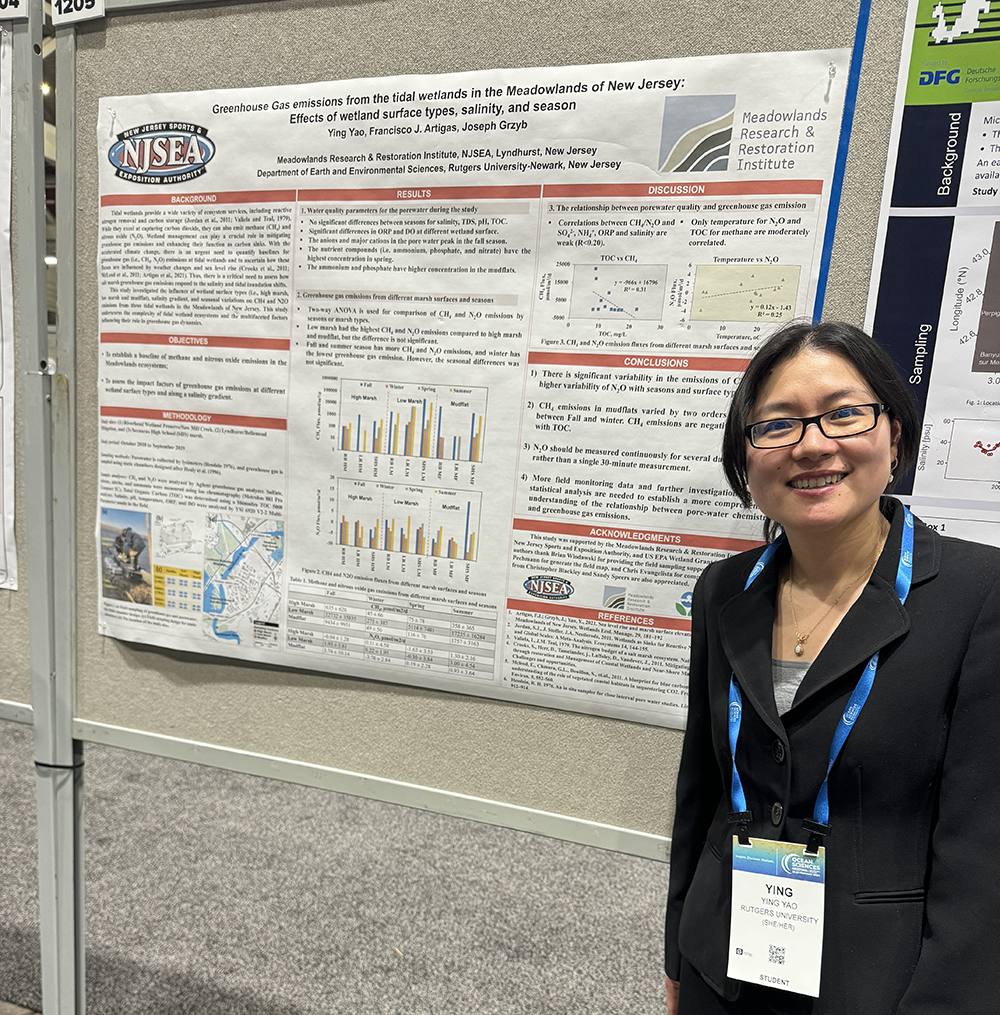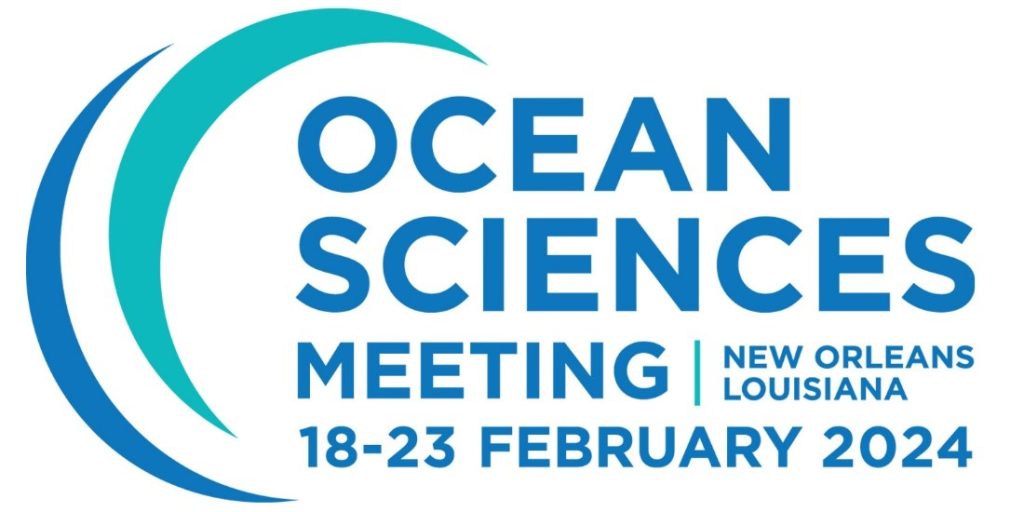At the 2024 Ocean Sciences Meeting (February 18-23, 2024), Cheryl Yao, Meadowlands Research and Restoration Institute (MRRI) Chief Chemist/Laboratory Supervisor, presented MRRI’s research, “Greenhouse Gas Emissions from the Tidal Wetlands in the Meadowlands of New Jersey: Effects of wetland surface types, salinity, and season.”
This study is supported by US EPA Wetland Grant and investigated the influence of wetland surface types (i.e., high marsh, low marsh and mudflat), salinity gradient, and seasonal variations on methane (CH4) and nitrous oxide (N2O) emissions from three tidal wetlands in the Meadowlands of New Jersey. Tidal wetlands provide a wide variety of ecosystem services, including reactive nitrogen removal and carbon storage. While they excel at capturing carbon dioxide, they can also emit methane and nitrous oxide. Wetland management can play a crucial role in mitigating greenhouse gas emissions and enhancing their function as carbon sinks. With the accelerated climate change, there is an urgent need to quantify baselines for greenhouse gas (i.e., CH4, N2O) emissions at tidal wetlands and to ascertain how these fluxes are influenced by weather changes and sea level rise. Thus, there is a critical need to assess how salt marsh greenhouse gas emissions respond to the salinity and tidal inundation shifts. This study underscores the complexity of tidal wetland ecosystems and the multifaceted factors influencing their role in greenhouse gas dynamics.




